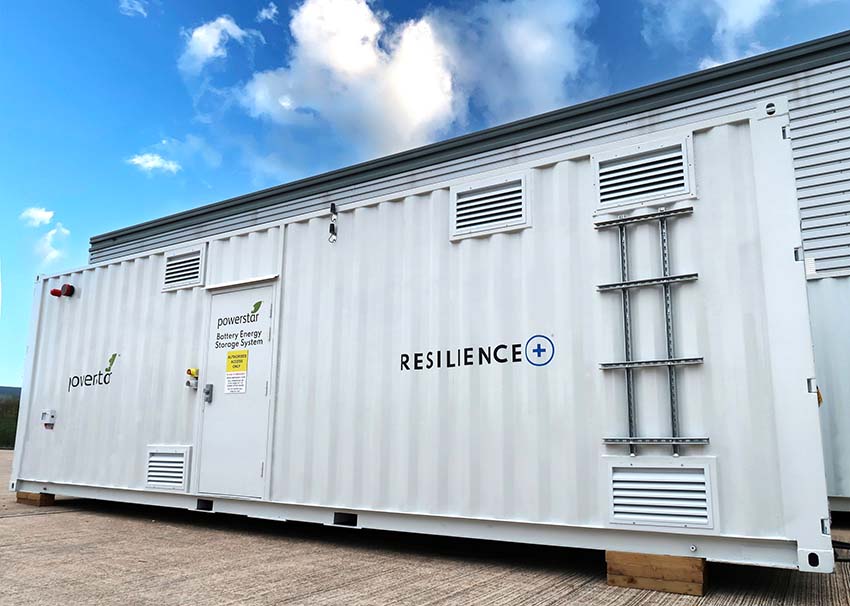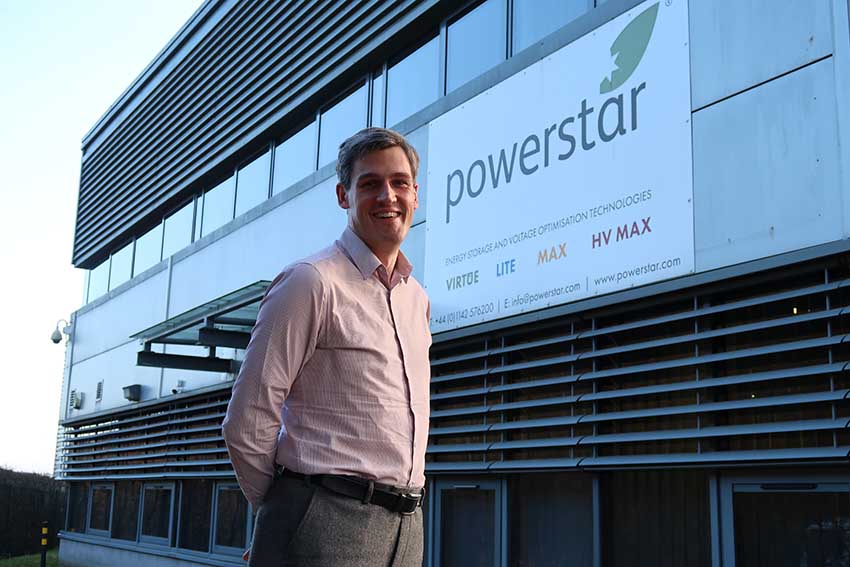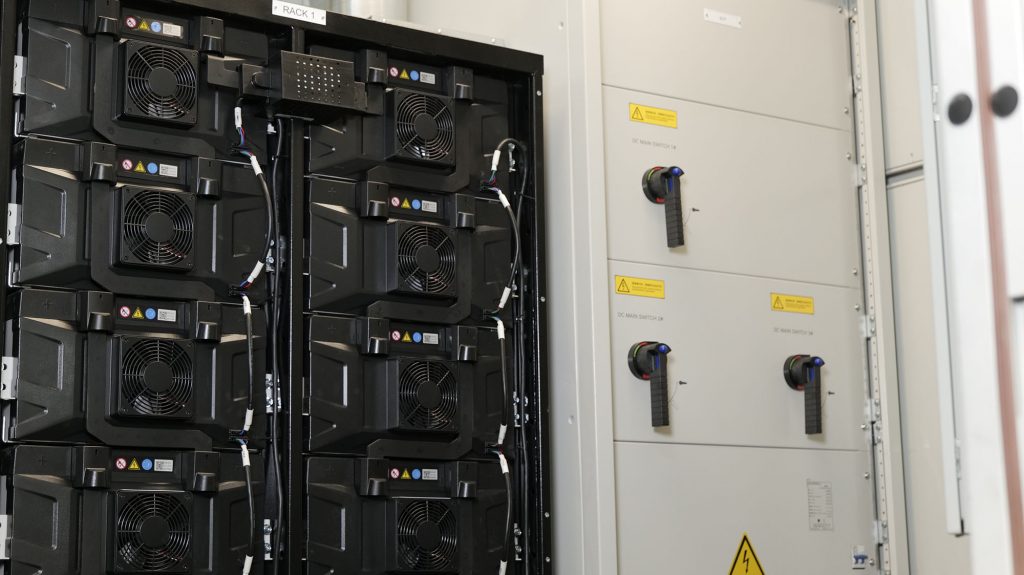Powerstar is a UK-based manufacturer of power resilience and smart energy solutions. The range of technologies help to protect customer’s sites from the risk of power disruption, while also helping to combat rising energy costs and reduce emissions associated with their energy use.
Interview with Alastair Morris, Chief Commercial Officer at Powerstar.
Easy Engineering: What are the main areas of activity of the company?
Alastair Morris: We provide bespoke technologies, including hardware and software, to a range of customer sectors, allowing their sites to continue to operate in the event of a power disruption as well as allowing electricity to be used more efficiently and intelligently. This ranges from healthcare providers where reliable power to critical care is vitally important, to energy-intensive manufacturing sites that need to reduce energy costs while protecting their productivity from the risk of disruption.
E.E: What’s the news about new products?
A.M: Powerstar has a large research and development department, who work constantly to deliver improvements on our core technologies as well as developing new products and services.
Each of our core technologies has seen new innovations that improve their performance. This includes improvements across all three aspects of the so-called energy trilemma, ensuring that our technologies can offer a comprehensive energy management solution that bolsters power resilience, reduces energy costs and boosts sustainability.

E.E: What are the ranges of products?
A.M: Powerstar manufactures three primary technologies, each able to bolster a site’s power resilience while also offering reduced costs and better energy sustainability through greater energy efficiency.
Voltage optimization cleans and conditions incoming voltage, providing equipment with lower, conditioned levels of voltage that reduces your energy consumption and reduces wear and tear on electrical equipment.
Battery energy storage systems are one of the most flexible energy technologies available, providing site-wide, instantaneous emergency power in the event of power disruption while also opening up other power management options. This can include reducing costs and carbon emissions by maximizing the performance of on-site renewables or purchasing power when renewable energy is plentiful on the grid. Battery storage also helps to integrate high-demand technologies, such as EV charging, or can be used to generate additional revenue through engaging with demand side response services.
Many existing transformers are aging and represent a growing failure risk, while also suffering from high losses that negatively impact on energy costs and carbon emissions. Our low-loss transformers solve all these issues, bolstering power resilience while saving money and carbon emissions through significantly increased energy efficiency.
E.E: At what stage is the market where you are currently active?
A.M: Some sectors have long recognized the need for power resilience, including healthcare, data centers and some manufacturers. However, as the UK shifts towards a more inflexible, renewable energy-based generation mix, a wider range of organizations are experiencing the costs and lost productivity that can be caused by power disruption. A growing number are turning to technology to ensure that their operations can continue unaffected even if their grid supply is disrupted.
While technologies including electric vehicles and distributed renewable energy generation are growing rapidly, the same cannot always be said for the energy infrastructure needed to properly integrate these technologies. These technologies will be critical for achieving net zero, but without significant investment in distribution networks they risk constrained infrastructure and an increased possibility of localized power disruption. This has seen a growing range of sectors recognizing the importance of power resilience solutions to not only protect their site but to allow them to integrate EV charging or on-site generation more effectively without compromising their distribution network or seeing proposed projects turned down due to power resilience concerns.

E.E: What can you tell us about market trends?
A.M: While lead acid-based UPS has typically been used to provide emergency power, growing pressure both to reduce energy costs and improve sustainability means that a growing number of organizations are looking for other options. Lithium-ion batteries are capable of providing the same instantaneous emergency power as other UPS but bring significant additional benefits. They are much more energy efficient, avoiding the substantial losses and subsequent additional energy costs of other UPS. They can also be used to manage electricity much more intelligently, providing a range of flexibility including the ability to store energy generated on-site for later use, buffer energy-intensive technologies such as EV charging, or purchase and store electricity at lower costs to be used during peak periods.
E.E: What are the most innovative products marketed?
A.M: Our battery energy storage systems are one of the most innovation products currently on the market, offering the same instantaneous power resilience as UPS batteries while also delivering the greater flexibility of other BESS systems. This allows one battery system to effectively fulfil two roles, replacing UPS with a lower cost, lower carbon alternative that provides the same level of protection while also providing the utility of a BESS. Implemented alongside on-site generation, our battery systems can transform an entire site into a smart microgrid, intelligently managing multiple power flows and allowing your site to operate independently of the grid when required. This year we delivered the first ever UPS system that simultaneously provides grid services to the NHS, and that is compliant with the Health Technical Memorandum 06-01.
Powerstar also offer unique modelling and simulation services, allowing your entire site and any proposed technology solutions to be modelled digitally and testing across a wide range of different conditions to ensure that it works exactly as intended when installed. This avoids the risk of an unusual combination of external factors resulting in your chosen energy infrastructure not operating as expected or, worse, disrupting your site and operations.

E.E: What estimations do you have for 2022?
A.M: The energy price crisis shows no signs of abating, driving up not just energy costs but the wider cost of doing business. Finding ways to counteract these increases is a growing priority, and many businesses will need to take control of their energy usage by implementing energy efficiency technologies and the ability to use the electricity they do pay for more intelligently. Put simply, the cheapest unit of electricity is the one that you don’t use, and energy efficiency will play a critical and growing role in mitigating the worst impact of the energy crisis.
At the same time, the pressure to address sustainability ahead of widespread net zero deadlines for both the UK and the EU isn’t going away, while organizations must ensure that their energy is protected and reliable. Known as the energy trilemma, balancing these three disparate energy management priorities will become an increasingly difficult balancing act. This requires the careful selection of solutions that are able to deliver concrete cost savings, better sustainability or greater power resilience, or a combination of the three, without compromising another element of the trilemma.

